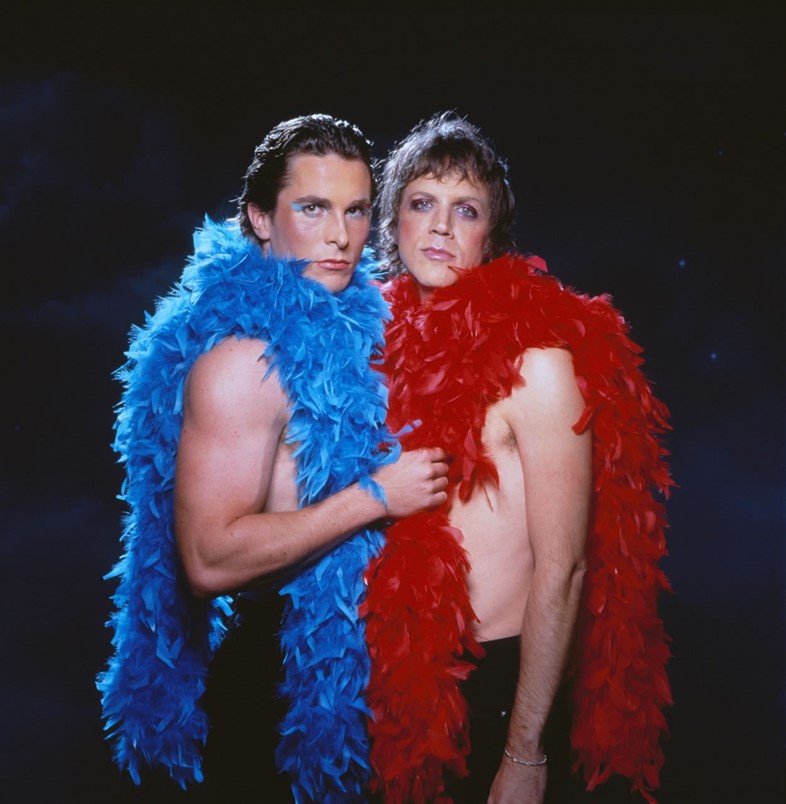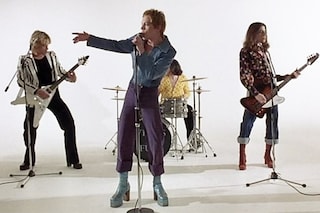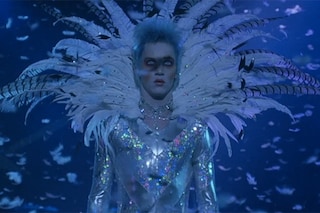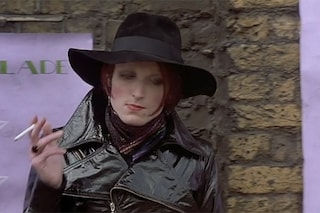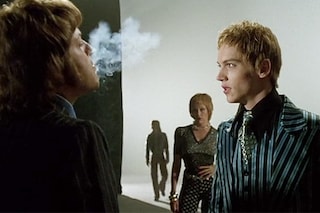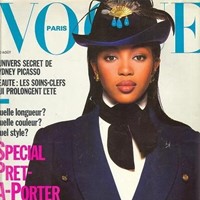Starring Ewan McGregor, Christian Bale, and Jonathan Rhys-Meyers, Todd Haynes’ cult 1998 film is a wild exploration of the glam rock era
As new Todd Haynes film May December gets its debut at Cannes, revisit this fashion breakdown of his cult queer 1998 movie Velvet Goldmine, first published in October 2018.
When Todd Haynes set out to make Velvet Goldmine back in the mid-90s, the transgressive director explained he had ‘a very modest goal’ for the experimental film – “I want to turn every gay person straight, and every straight person gay.”
Starring Ewan McGregor, fresh from playing Mark Renton in Trainspotting, brooding indie-fave Jonathan Rhys-Meyers, and Christian Bale as you’ve never seen him before, the cult film – which turns 20 this month – offers a snapshot of the hedonistic glam rock scene of 1970s Britain, and features more than a few characters the might seem weirdly familiar. Which is not surprising, when you realise it’s based on David Bowie’s own escapades, and would have been a straight-up Bowie biopic had he not pulled the rights to his music.
Taking its name from the Bowie song of the same name, Velvet Goldmine tells the story of Arthur Start (Bale), a journalist writing a story on Brian Slade (Rhys-Meyers) – an androgynous glam rocker who bears a striking resemblance to the musician at the height of his Ziggy Stardust fame. At some point in the mid-70s, Slade grew disillusioned with rock ‘n’ roll, and stepped (without giving too much away) rather dramatically out of the spotlight, away from public view entirely.
In an effort to track him down, Start interviews those closest to Slade, including his ex-wife (the v Angie Bowie-esque Toni Collette) and fellow rockstar Curt Wild (McGregor, in full Iggy Pop-meets-Lou Reed mode), as he slowly pieces together his life and, ultimately, his whereabouts. Also explored is the profound impact the performer had on the journalist – a teenage Slade-stan – and the ways in which Wild and Slade’s flamboyance and unashamed bisexuality helped him come to terms with his own identity.
The film’s aesthetic is as wild as its subject matter, too. From huge, over-the-top concert performances (keep your eyes peeled for members of Radiohead, Pulp, Suede, and Placebo, who all appear in the movie) and surreal, avant-garde music video clips, to Haynes’ dystopian vision of 80s London and one particularly visceral, glitter-soaked moment of carnal desire, Velvet Goldmine is a visual feast from start to finish. Its pinnacle, though, is its incredible costumes – so, with that in mind, here we unpick its stylistic legacy.
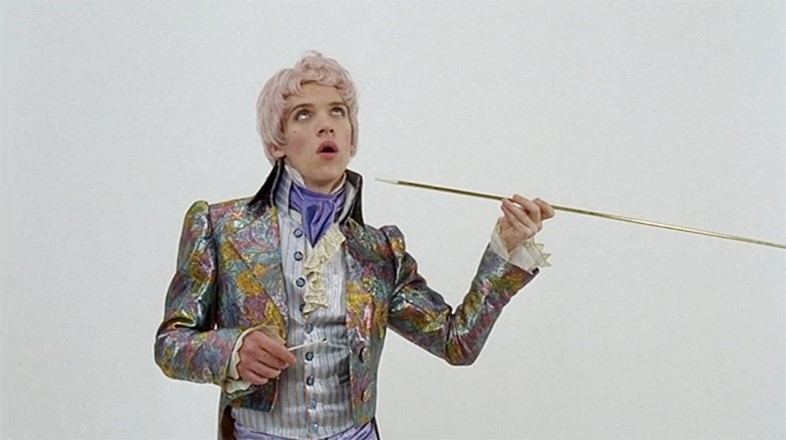
THE LOOK
From the moment the film kicks off, viewers are bombarded with sequined catsuits, lavishly-embroidered kimonos, and metallic leather that leaves little-to-nothing to the imagination – as costumed by Oscar-winning costume designer Sandy Powell, the clothing worn by the film’s enigmatic rockstars subverts and twists gender in truly glorious, camp fashion. The Iggy Pop-esque Curt Wild writhes on stage in skintight leather trousers with his chest bare, while Brian Slade wears a series of looks that tap into Bowie’s style instead of simply copying it. Some of the best looks include a Kansai Yamamoto-style jumpsuit, a glittering one-piece with a huge feather-trimmed collar, and a romantic, Louis XVI-inspired brocade coat, enormous platforms, and powder pink curled wig.
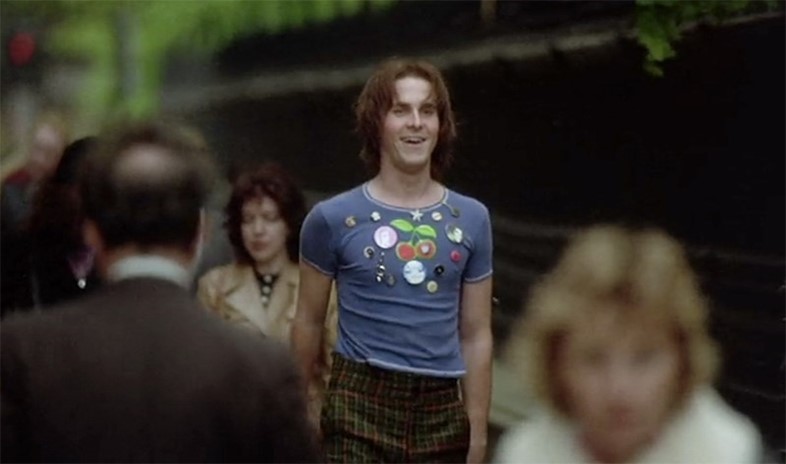
THE LOGIC
The flamboyant costumes worn by Slade, Wild, and New York Dolls-esque band The Flaming Creatures (who Brian Molko fronts in the film, looking suspiciously like T-Rex’s Marc Bolan) sit in stark contrast to those initially worn by a teenage Arthur Start during the same era. Starting out as the stereotypical, wide-eyed boy-next-door with a passion for music, Start’s tight, cap-sleeved t-shirts, flared, flea market-found Levi’s, and simple leather jacket eventually make way for blue hair dye and heavy makeup, as he explores his burgeoning sexuality. They also provide a counterpoint to the dark, grey days of the 1980s when Start begins his investigation into Slade’s whereabouts, and further emphasise how unique this brief, technicolour moment in time actually was. “We set out to change the world, but we only ended up changing ourselves,” Wild tells Start as the film draws to a close. The journalist asks him what’s wrong with that, as the camera cuts to a dingy cafe filled with sullen-faced kids in nondescript, dull clothing. “Nothing. As long as you don’t look at the world,” Wild responds.

THE LEGACY
Velvet Goldmine’s stylistic legacy is inextricably tied up in that of Bowie, Iggy Pop, and the glam rock scene of the 1970s – an era which continues to enchant and inspire designers around the world. The avant-garde aesthetic of the era runs through many of Alessandro Michele’s collections for Gucci, as androgynous models make their way down his runways in clashing sequins, slim, 70s-style floral suits, and beaded jumpsuits (as worn by Harry Styles and Frank Ocean respectively). Emerging designers, too, are looking to the era, whether subconsciously or not. Earlier this year, Madrid-based menswear label Palomo Spain sent a collection of diaphanous dresses, feathered capes, and short, tailored jumpsuits covered in mother of pearl buttons through the winding halls of the Spanish capital’s Museum of Natural History, while Ludovic de Saint Sernin is carving out a niche with his ambiguous, erotically-charged clothing, as a new generation endeavour to break down the lines of gender once and for all.
